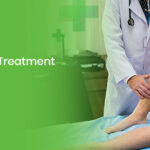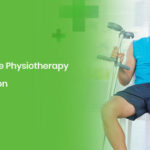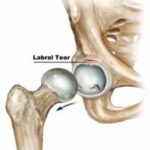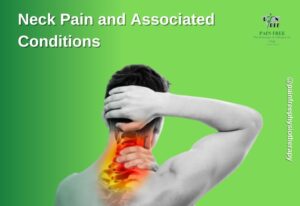Neck Pain and Its Associated Conditions
The neck (cervical spine ) is one of the most commonly injured areas due to its need for wide range of movement, which can compromise stability. Injuries in this region may cause localized pain in the neck, but they can also lead to headaches and discomfort in the arms and between the shoulder blades.
The neck as a result of an enormous amount of movement undergoes wear and tear of supporting muscles and ligament giving rise to strains and sprains in these structures. Moreover, as a result of sustained activities on the desktop/laptop in a wrong posture has increased incidences of cervical stains. The hectic schedules in metro cities with people carrying their laptops/ files and lunch across their shoulders contribute to their cause.
A majority of neck pain gets better over time without much intervention, however, a few symptoms are indications of possibly serious medical conditions and patients should seek immediate medical attention.
Cervical symptoms that need immediate medical attention are-
• Neurological deficit like weakness in the arms or loss of feeling and coordination in the arms or legs could indicate nerve damage.
• Excessive pain accompanied by appetite loss, excessive weight loss, and nausea and vomiting, or fever, there could be a spinal tumor or infection.
Common causes of neck strains and sprains (soft tissue injuries around the neck) include:
• Sleeping in the wrong position – the patient often wakes up with a wry/ stiff neck due to sleeping in an awkward or atypical position or overextended neck that strained the muscles and ligaments around the neck.
• Sports injury – Injury to neck muscles while sporting activity is common. A collision or fall in an unusual manner can have severe consequences like nerve entrapment between cervical vertebras or fractures of the cervical spine.
• Poor Posture – Working for long hours in a faulty posture gives rise to cervical strain, and in the long run, other serious problems related to the neck. Text neck is a common problem these days with excessive use of cell phones.
• Repetitive motions – Activities such as dancing and sports that involve repetitive neck twisting and turning can give rise to strains and sprains of the neck.
• Whiplash injury – In a whiplash injury, the head and neck are forced suddenly backward and immediately forward with a great deal of force resulting in tear or rupture of soft tissues around the cervical spine. A motor vehicle accident or contact sports injury can be a whiplash-type.
Acute Neck Pain
Acute neck pain often arises due to soft tissue injuries around the neck as discussed under the strains and sprains above.
Most of these injuries to the ligaments, tendons, and muscles in the neck usually heal in a couple of days, but, if the problem persists it’s better to see a physiotherapist in time before it gets worse.
Chronic Neck Pain
A Neck pain that has persisted for more than 6-8 weeks is considered chronic. The most probable structures involved in chronic conditions are facet joints, the cervical vertebrae or disc. It can be at a single level (i.e. structures between two vertebrae) or multiple levels.
Common causes include-
Degenerative Disc Disease (DDD)
The natural wear and tear on the cervical spine over time take place as a process of aging. The disc gradually loses its hydration and its ability to cushion the spinal vertebrae.
If the wear and tear of the spine have progressed significantly it can lead to painful irritation of a cervical nerve in various ways, such as a herniated disc, pinched nerve, or changes in the facet joints (facet arthropathy) and spondylosis.
Disc Herniation (PIVD)
Herniation of a cervical disc is when the jelly-like inner layer, the nucleus pulposus, leaks out through a tear in the disc’s protective outer layer, the annulus fibrosus.
A herniated disc may compress a cervical nerve giving rise to radicular pain in the hands, condition known as cervical radiculopathy.
Cervical Spondylosis
The disc in between the vertebrae flattens with aging resulting in an approximation of vertebrae and facets over time. The friction in the approximated cervical vertebrae leads to an overgrowth of bones at the margins of the vertebrae called osteophytes.
This leads to significant pain and stiffness in the neck. This condition is known as cervical spondylosis.
The facet joint also loses its smooth gliding rather produces grinding sound as a result of reduced space leading to facet arthropathy.
Spinal Stenosis/ Myelopathy
In the advanced stage of cervical spondylosis, severe osteophytes (bone spurs) lead to narrowing of the spinal canal. Spinal canal narrowing can also occur from severe central disc bulge (herniation in the central canal).
This condition is known as spinal stenosis. Myelopathy results when the narrowing of the central canal is severe enough to compress the spinal cord.
Symptoms like weakness or problems with coordination in the arms, hands, legs, or feet are features of advanced stage Myelopathy.
Foraminal stenosis
The vertebral foramen is present at the sides, formed between articular pillars of two adjacent vertebrae. The foramen space can be compromised due to facet joint arthropathy (bone spurs at facet joint) or Posterolateral disc herniation (disc bulge to the sides).
This can compress the exiting nerve root at that level giving rise to symptoms of pins and needle and numbness along with the distribution of the same nerve. This nerve root irritation at the cervical level is also known as cervical radiculopathy.
By identifying the pattern of numbness, reflex changes and muscle weakness a physiotherapist can easily predict the nerve root involved and the level at which nerve is compressed.
Foraminal stenosis can co-exist with cervical Myelopathy.
Spondylolisthesis
As a result of a defect in pars interarticularis a vertebra slips over the vertebra below it. This can result from traumatic fracture or ligament laxity. Spondylolisthesis may present as radiculopathy of the involved segment.
The neck is often involved in a later stage of Ankylosing Spondylitis. This is a form of progressive arthritis that affects the spine and large joints of the body.
Pain and stiffness are present throughout the spine and in advance stage, all the vertebra fuses to form a rigid spine giving a bamboo-like appearance.
Non-Specific causes of Neck Pain
Some non-specific causes of neck pain include:
• Emotional stress. Stress, anxiety, or depression can tighten the muscles of neck producing trigger points in and around the neck which most of the time causes referral pains in head, jaw, over eyebrow, chest, and arms.
• Infection: Eg. Meningitis.
• Myofascial pain: The adherence of muscles with its surrounding connective tissue results in chronic pain especially in the neck and upper back region. This condition also features the pain points called trigger points.
• Fibromyalgia. The neck is one of the most common areas to be involved in cases of fibromyalgia.
• Spinal tumor: Cancerous growth can occur in the cervical spine or metastasize from other body parts to the cervical area and press against the cervical nerve.
Patients with neck pain associated with one or more of the following symptoms should immediately see a physician/ orthopaedician –
• Fever or chills
• Nausea or vomiting
• Clumsiness with hands, such as dropping items or trouble buttoning a shirt
• Increased difficulty with walking or bowel or bladder control
• Fatigue, trouble with memory or thinking that persists
• Pain that does not improve after a few days and continues to disrupt daily activities, such as dressing, driving, and/or sleeps.
Risk Factors for Developing Neck Pain
• Inadequate sleep
• Inactivity
• Smoking
• Poor posture while working
• Long hour desktop job
• Intensive labor work involving carrying heavyweights on the head
• Installation and maintenance job
We at PAIN FREE PHYSIOTHERAPY CLINIC can efficiently diagnose the underlying cause of cervical pain and pains in other nearby areas which can potentially be originating from cervical. Get in touch with our experts for any cervical-related issue.






